Recent Articles
Popular Makes
Body Types
2017 BMW 330e iPerformance Road Test and Review

2017 BMW 330e iPerformance exterior profile ・ Photo by BMW
Somewhere out there, there must be frustrated Prius owners who would rather be driving a BMW, but won’t because their cars aren’t eco-friendly enough. Now BMW has an answer: The new iPerformance series of plug-in hybrids. The 330e iPerformance has a plug-in hybrid drivetrain that offers guilt-free fuel economy and the ability to plug in and drive on electricity only (albeit for limited distances). Does it feel like a proper BMW? Let’s take it for a spin and find out.
3-Series: The standard by which others are judged.
The BMW 3-series isn’t so much a car as it is an institution: It’s the go-to luxury sport sedan against which others are judged. How many reviews have you read that compared the car in question to a BMW? While it’s fun to disparage BMW owners — I will sheepishly admit that I have done it myself, and given the number of times I was cut off during my week of driving the 330e, I’d say I’m not alone — the fact is they are on to something. The 3-series is a great car to ride in and a great car to drive, and the plug-in hybrid system really doesn’t do that much to change the car’s character.
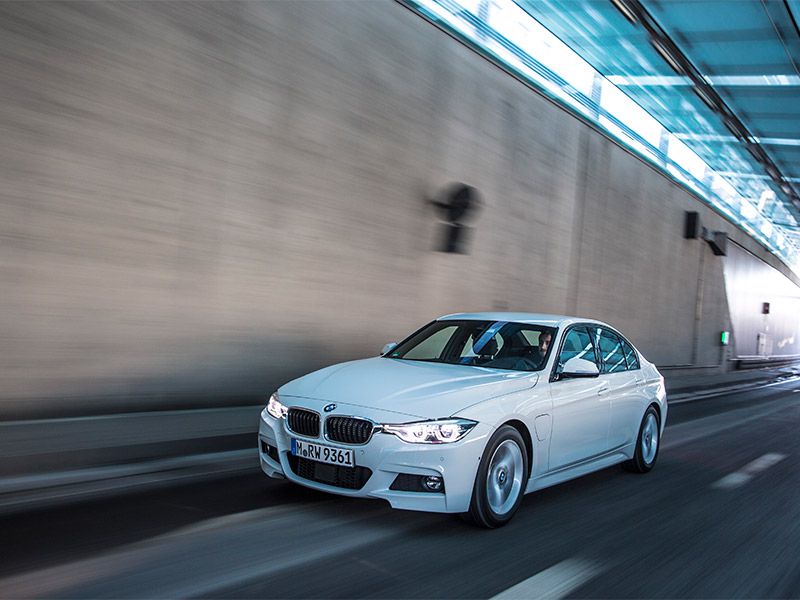
Photo by BMW
A BMW-Flavored Hybrid System
Let’s look at the hybrid system in detail. It’s built around BMW’s turbocharged 2.0 liter four-cylinder engine, which puts out 180 hp and 215 lb-ft of torque. This is a great engine that has no trouble handling BMW’s bigger 5-series, and a 3-series with this engine alone (the 320i model) scoots along just fine. The 330e adds an 87 horsepower electric motor sandwiched between the engine and the eight-speed automatic transmission. Total system output is 248 hp and 310 lb-ft, similar to the turbo six-cylinder engine found in the 330i. Unlike other 3-series models, the 330e iPerformance is not available with all-wheel-drive or a manual transmission; all have an automatic transmission sending power to the rear wheels.
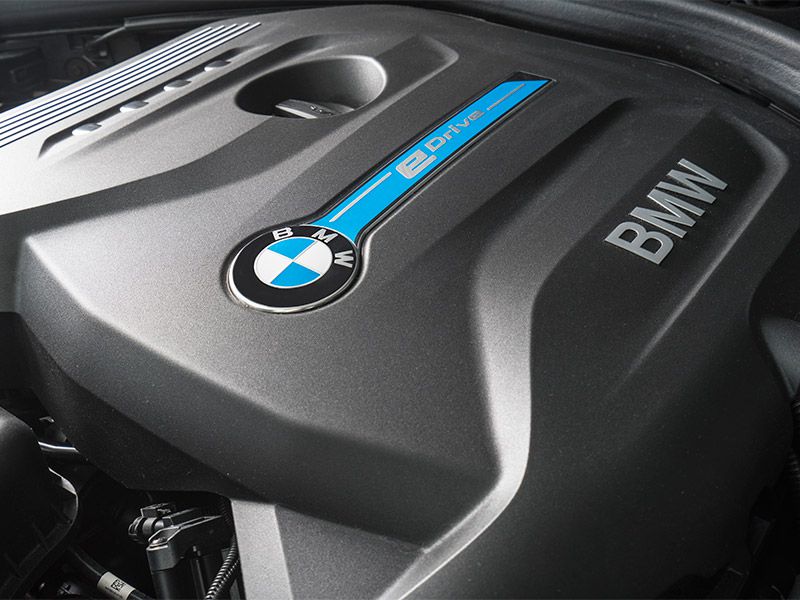
Photo by BMW
All torque, all the time.
One of the wonderful things about an electric motor is that it can deliver all of its rated torque from a standstill — the complete opposite of a turbocharged gasoline engine, which needs time for the turbo to spin up before it can deliver maximum thrust. The 330e primarily operates much like a regular hybrid, with the gasoline engine providing most of the power and the electric motor assisting as needed (and charging the battery when the car decelerates). And it uses this ability to its advantage. Gun it from a dead stop and it takes off like a much more powerful car. But the low-speed shifts can be rather abrupt, especially with a gentle foot on the throttle. We noticed several harsh 1-2 upshifts in both hybrid and all-electric modes, which surprised us — we don’t expect a car this expensive to ever feel so jarring.
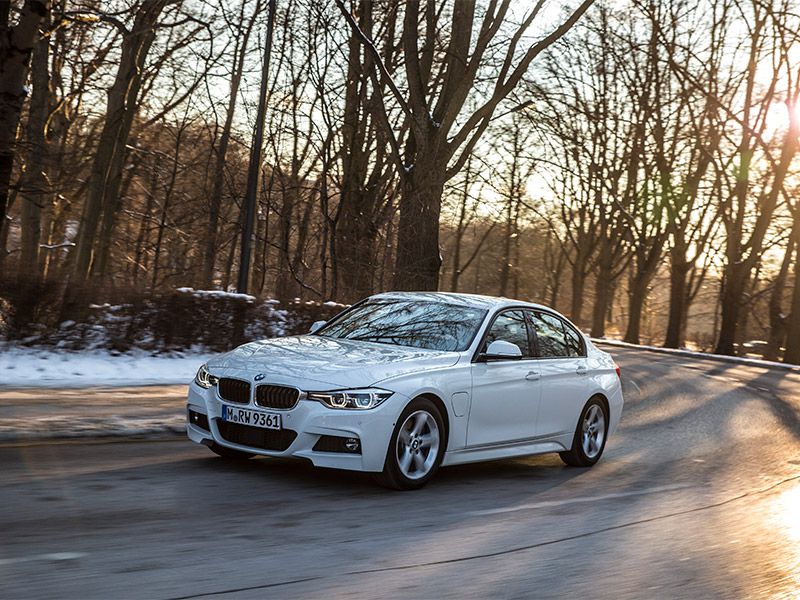
Photo by BMW
Plug it in, charge it up.
Of course, the 330e isn’t just a hybrid; it’s a plug-in hybrid. Using a standard EV charger, the 330e’s 7.6 kWh battery pack can be fully charged in just over two hours. The 330e can run in all-electric mode, but the range is pretty paltry: Just 14 miles. The system is primarily designed for Europe, where certain big cities exempt electric cars from “congestion charges." The idea is to plug in and juice up, then run the car in regular hybrid mode (“Save Battery” in BMW-speak) until you reach the city, at which time you select “Max eDrive." In this mode, the car will run on battery power at speeds up to 75 MPH, though if you floor the power the gas engine cuts in to assist. Not that it needs to. The 330e is surprisingly fleet of foot on electricity alone.
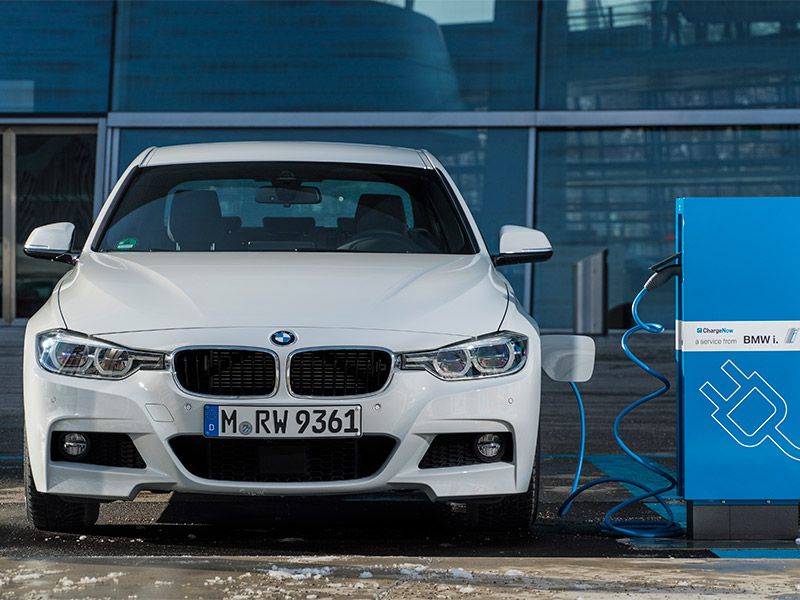
Photo by BMW
Smart use of electricity, but not much of it to use.
We didn’t test the 330e in Europe; instead we tested it in Los Angeles, California, which has no congestion charge (if it did, it’d be a doozy, because the roads here are always congested!). We juiced up the 330e and selected Auto eDrive, and we thought this system worked very sensibly. In city traffic and stop-and-go freeway jams, the 330e ran on battery power, and we were impressed at just how quickly it would take off without assistance from the gasoline engine. We sat in a stop-and-go jam on the infamous 405 Freeway consuming not an ounce of gasoline. Once traffic opened up — that does happen in Los Angeles, though not often — and our speed rose above 50 mph, the car fired up the gasoline engine and propelled us on fossil fuel. When we went back to city streets, the car switched back to electricity. This is a very sensible way to do things, as freeway driving eats up battery capacity very quickly. Unfortunately, the battery only lasted through a little more than half of our 21-mile journey, and we motored the last few miles home on gasoline. Still, the savings were significant. According to the trip computer, we averaged 70 miles per gallon on our gasoline-and-electric trip.
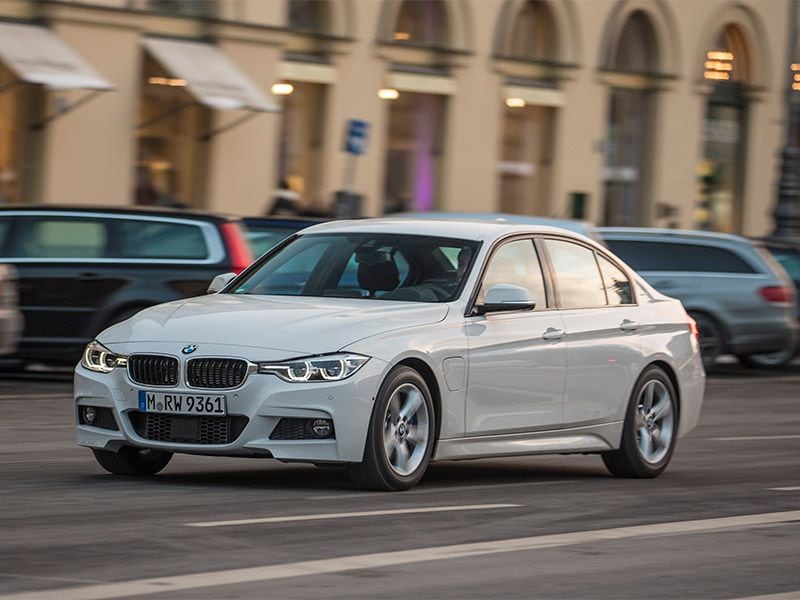
Photo by BMW
Regular Hybrid Mode
For most of the week, we drove the 330e without plugging in, and the 330e drove much like any other hybrid, using the electric motor to assist the gasoline engine and recharging the battery as the car decelerates. Aside from those occasional rough upshifts, the 330e behaved much like any other gasoline car, but the fuel economy was significantly better. The EPA gives the 330e a 30-mpg combined rating in regular hybrid mode; we used the “Eco Pro” driving mode as much as possible (though not always—one annoying trait of all BMWs is that they reset the drive mode to “Normal” when you start the car, and those who prefer Eco or Sport modes much remember to press the button). After a week, we averaged 33.7 mpg—maybe not a Prius-busting number, but better than the 28 mpg combined rating for the automatic 320i (which uses the same turbocharged four-cylinder engine but lacks the hybrid system). In our opinion, 34 mpg is pretty darn good for such a quick and enjoyable sports sedan.
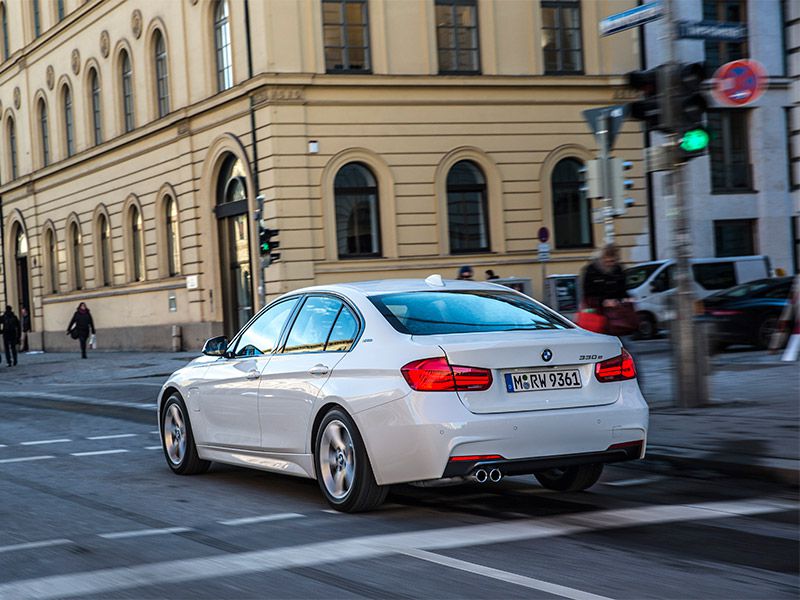
Photo by BMW
The rest of the story.
Enough, then, about the hybrid system. What about the rest of the car? It’s difficult not to enjoy one’s time in a BMW. Their interiors are very consistent, to the point of looking nearly the same. We like a lot of the old-school touches, including the simple analog gauges and a stereo with regular volume and tuning knobs. But the dial-controlled infotainment system can be rather infuriating. We had trouble with basic tasks like searching for locations by name. There’s a handwriting-recognition system that allows the system to be programmed by tracing letters on the surface of the control dial; it’s a bit faster than scrolling the dial and picking each letter, but the system seemed completely unable to figure out the handwriting of one of our passengers (although, to be fair, we have trouble reading his writing, too). We’d be happier with a nice old-fashioned touch screen.
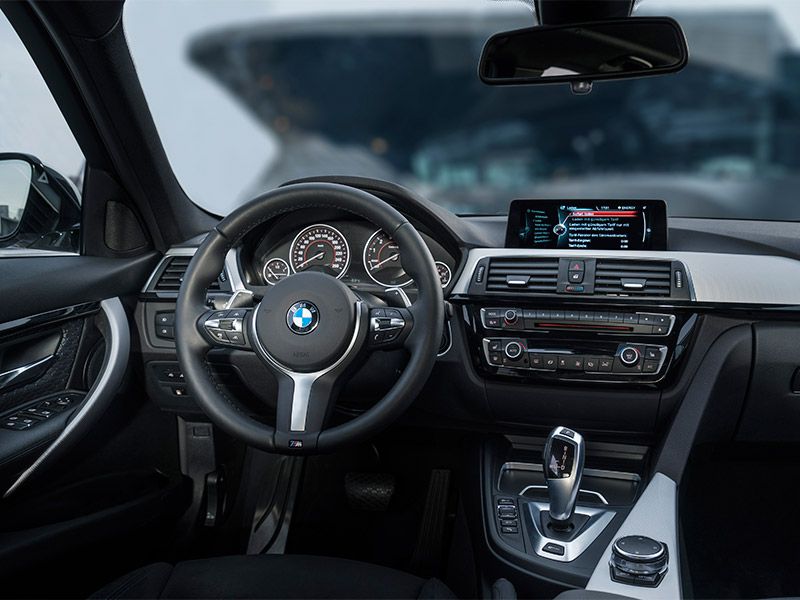
Photo by BMW
Sensibly Sized
We’ve always liked the size of the 3-series. It's small enough to park easily, but big enough to comfortably seat a family of four (and five in a pinch). The 330e offers just as much back seat room as other 3-series cars; it’s not the roomiest car in this class, but there is adequate space and comfort for adults. The battery is located under the trunk floor, which shrinks the cargo volume from 17 cubic feet to just 13 — not a great number. But there’s more to a trunk than volume: Shape also counts, and the 330e’s trunk does a good job accommodating suitcases and groceries. We hardly missed the extra four cubic feet.

Photo by BMW
Open wide — your wallet, that is.
There is one drawback to the 330e iPerformance: It’s seriously expensive. Prices start at $46,090, which is nearly $11,000 more than an entry-level 320i. And that’s just the bare-bones model; once you start adding options, the price can go through the roof. A lot of common features, including metallic paint, genuine leather upholstery, a rear-view camera, and even satellite radio, cost extra in a BMW, even though these items are often standard in lesser cars, making it easy to get the 330e’s list price well over $65,000. BMW didn’t supply us with a sticker price for the car we tested — we’re not terribly surprised — but a little time with the configuration tool put it at around $59,500. That’s a big premium for a plug-in hybrid system with just 14 miles of range. For comparison, Audi’s A3 e-Tron plug-in hybrid lists for $39,850, and Toyota’s Prius Prime plug-in hybrid — which, while not as flashy or fun-to-drive as the BMW 330e, goes nearly twice as far on each gallon of gas — can be had for around $28,000.
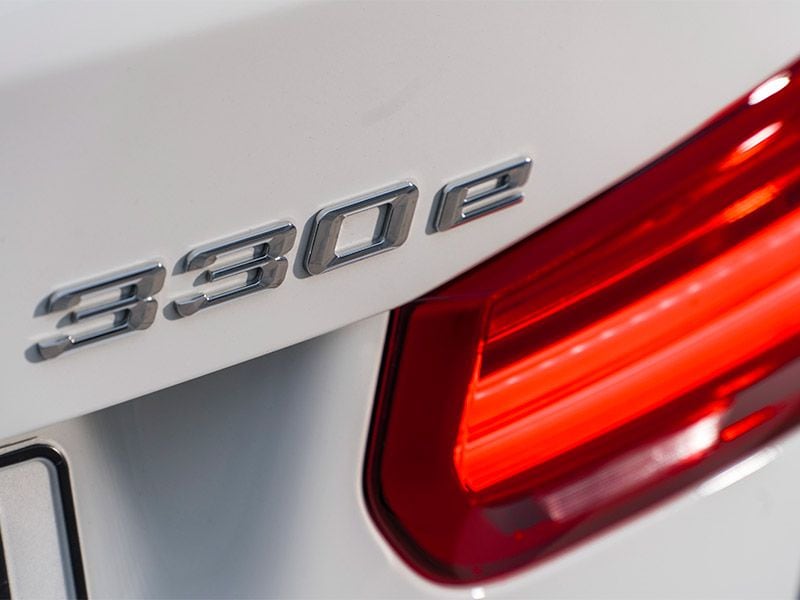
Photo by BMW
Good for the soul, if not the bankbook.
For the most part, we like the BMW 330e iPerformance. We think of it as a guilt-free BMW, because it lets you enjoy all the attributes for which this German company is famous — quick acceleration and great road manners — while using less fuel. Even if you never plug it in, the 330e will use a good deal less fuel than a standard 3-Series model, not to mention most of the Three’s competitors. And if you do plug it in and take advantage of its (admittedly limited) range, you can seriously cut your fuel bills. Then again, don’t go into a BMW showroom thinking a 330e will save you money. With such a high price premium, it’s unlikely that most drivers will ever cover enough miles to make up the difference in fuel savings. Perhaps if the 330e had a longer electric-only range, more drivers would stand a fighting chance, but with 14 miles — adequate for Europe, perhaps, but not for the United States — the savings potential is limited. Still, we like what the 330e is doing. BMW promised us a 3-series that uses significantly less fuel, and that’s what they delivered. We love that Bimmer was able to deliver this car without compromising all the things that make the 3-Series so great.
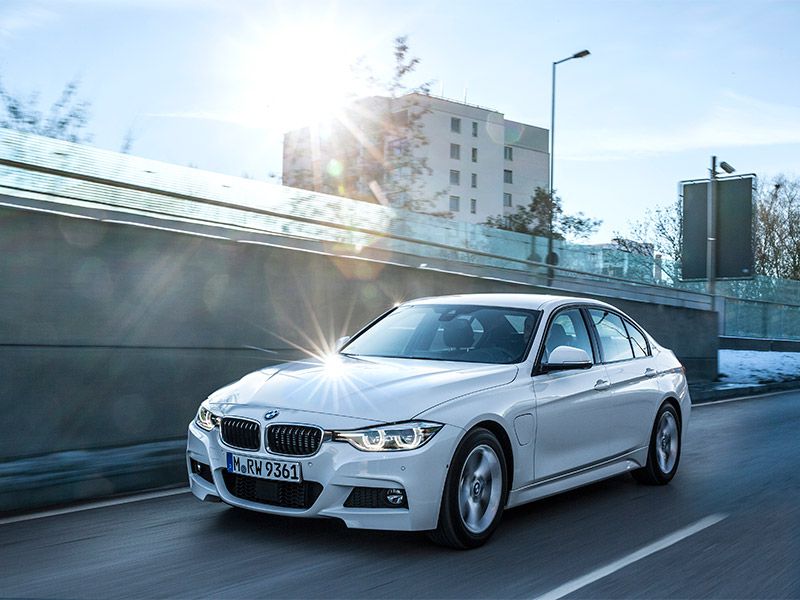
Photo by BMW